Athletes in weight-class sports have to “make weight” in order to compete. That is, prior to a competition, an athlete has to “weigh in” to ensure that he does not exceed the weight limit for a particular sport. Cutting weight is common in “combative” sports such as boxing, judo, taekwondo, and wrestling in which athletes attempt to compete one or two weight classes below their normal weight. The athlete attempts to lower his weight through a combination of strategies that often involve dehydration techniques prior to weigh in. Some of these techniques are considered to be “pathogenic weight control methods” and are not different from the compensatory behaviors used by bulimic individuals. After weighing in with a dehydrated lower weight, the athlete will then eat and rehydrate. By doing so, his weight increases.
The rationale behind weight cutting is that it allows the athlete to have the strength of a larger body when competing at a lower weight. Such techniques appear to be a part of a subculture of these sports and as such are considered “normal.” Because these are such a part of a particular sport, many athletes use them. Therefore, the so-called advantage of weight cutting is offset by the fact that the combatant’s opponent has most likely done the same. Of course, then the argument for using them is that the athlete must use them because his opponent is using them. The use of such techniques is not without health risks. In 1997, three collegiate wrestlers died of complications related to weight cutting. As a result, the NCAA implemented several changes regarding cutting weight in order to safeguard wrestlers.
If you or someone close to you may be at risk by cutting weight, act quickly to get the help and treatment needed. Early identification and intervention can help prevent the possible dangerous consequences of cutting weight. The Victory Program at McCallum Place is a special eating disorder treatment program, which may be able to help. This program offers specialized treatment designed for athletes to treat eating disorders and many other co-occurring conditions.
















